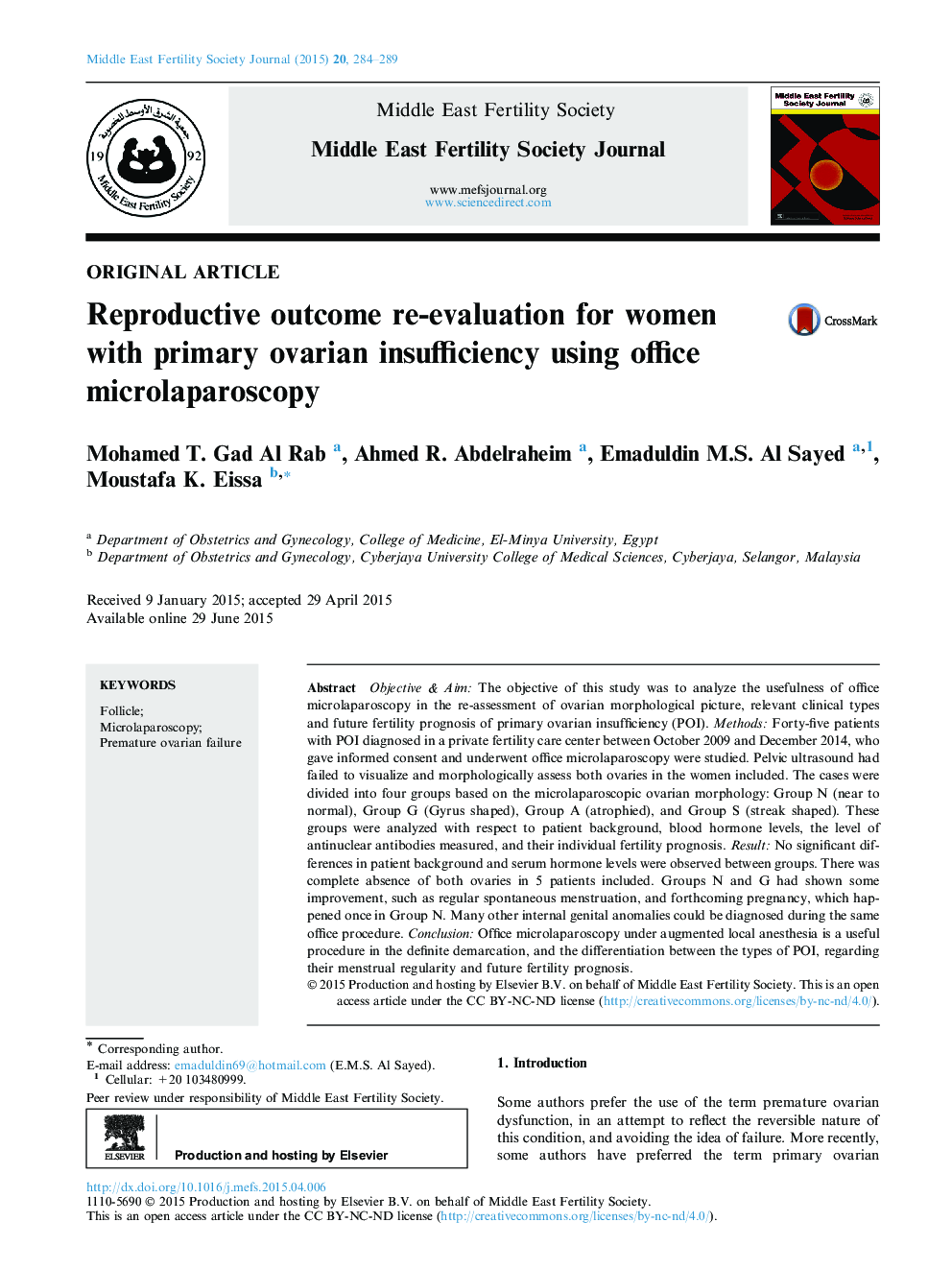| Article ID | Journal | Published Year | Pages | File Type |
|---|---|---|---|---|
| 3966089 | Middle East Fertility Society Journal | 2015 | 6 Pages |
Objective & Aim: The objective of this study was to analyze the usefulness of office microlaparoscopy in the re-assessment of ovarian morphological picture, relevant clinical types and future fertility prognosis of primary ovarian insufficiency (POI). Methods: Forty-five patients with POI diagnosed in a private fertility care center between October 2009 and December 2014, who gave informed consent and underwent office microlaparoscopy were studied. Pelvic ultrasound had failed to visualize and morphologically assess both ovaries in the women included. The cases were divided into four groups based on the microlaparoscopic ovarian morphology: Group N (near to normal), Group G (Gyrus shaped), Group A (atrophied), and Group S (streak shaped). These groups were analyzed with respect to patient background, blood hormone levels, the level of antinuclear antibodies measured, and their individual fertility prognosis. Result: No significant differences in patient background and serum hormone levels were observed between groups. There was complete absence of both ovaries in 5 patients included. Groups N and G had shown some improvement, such as regular spontaneous menstruation, and forthcoming pregnancy, which happened once in Group N. Many other internal genital anomalies could be diagnosed during the same office procedure. Conclusion: Office microlaparoscopy under augmented local anesthesia is a useful procedure in the definite demarcation, and the differentiation between the types of POI, regarding their menstrual regularity and future fertility prognosis.
